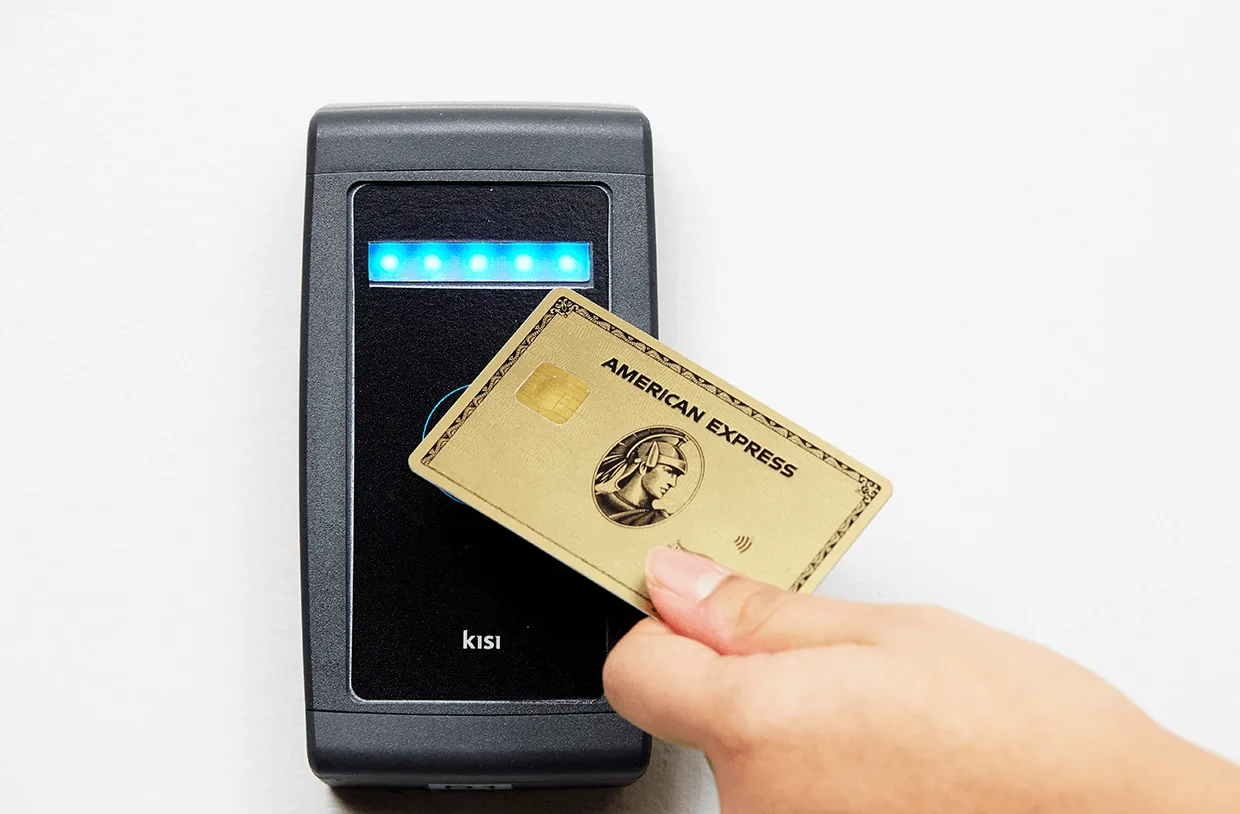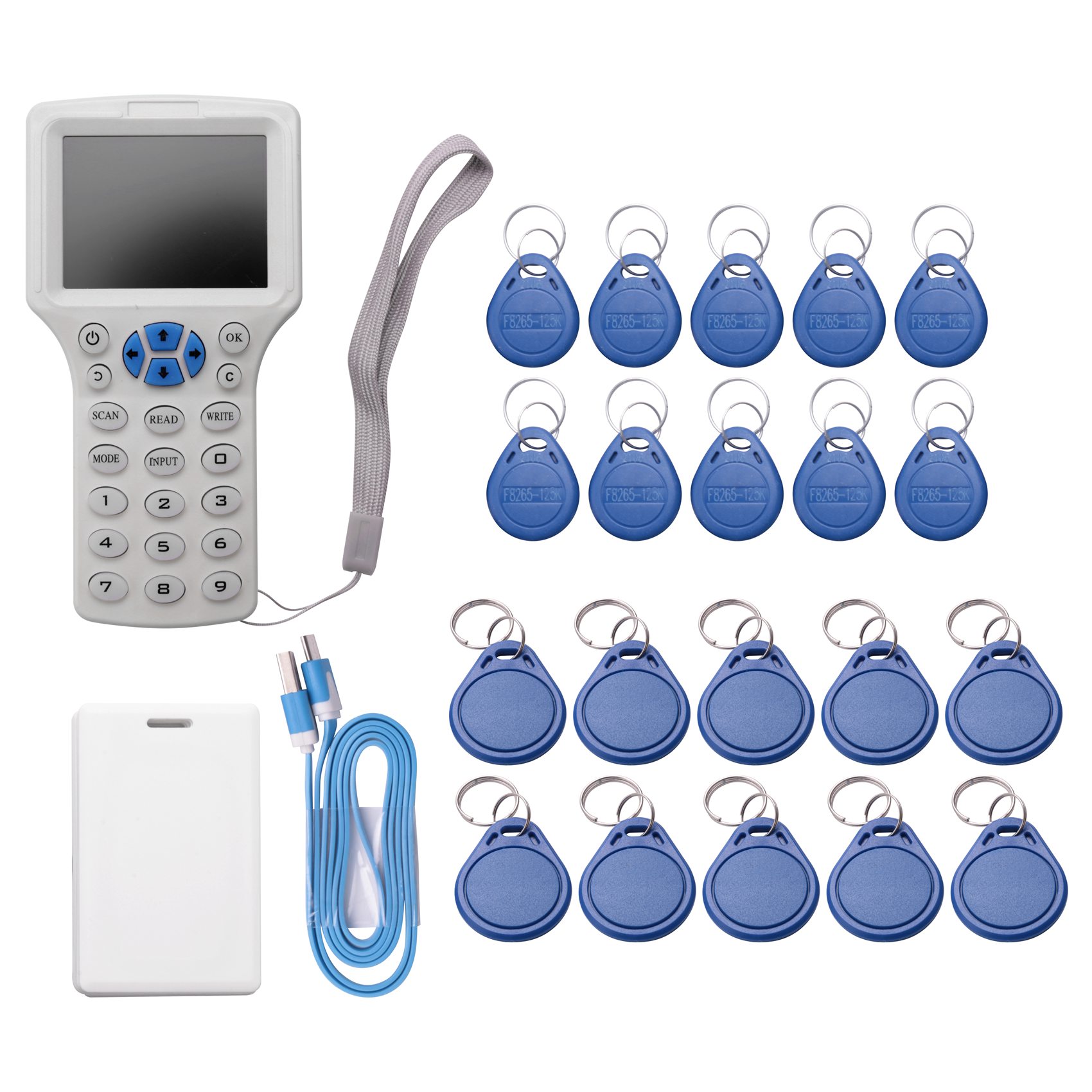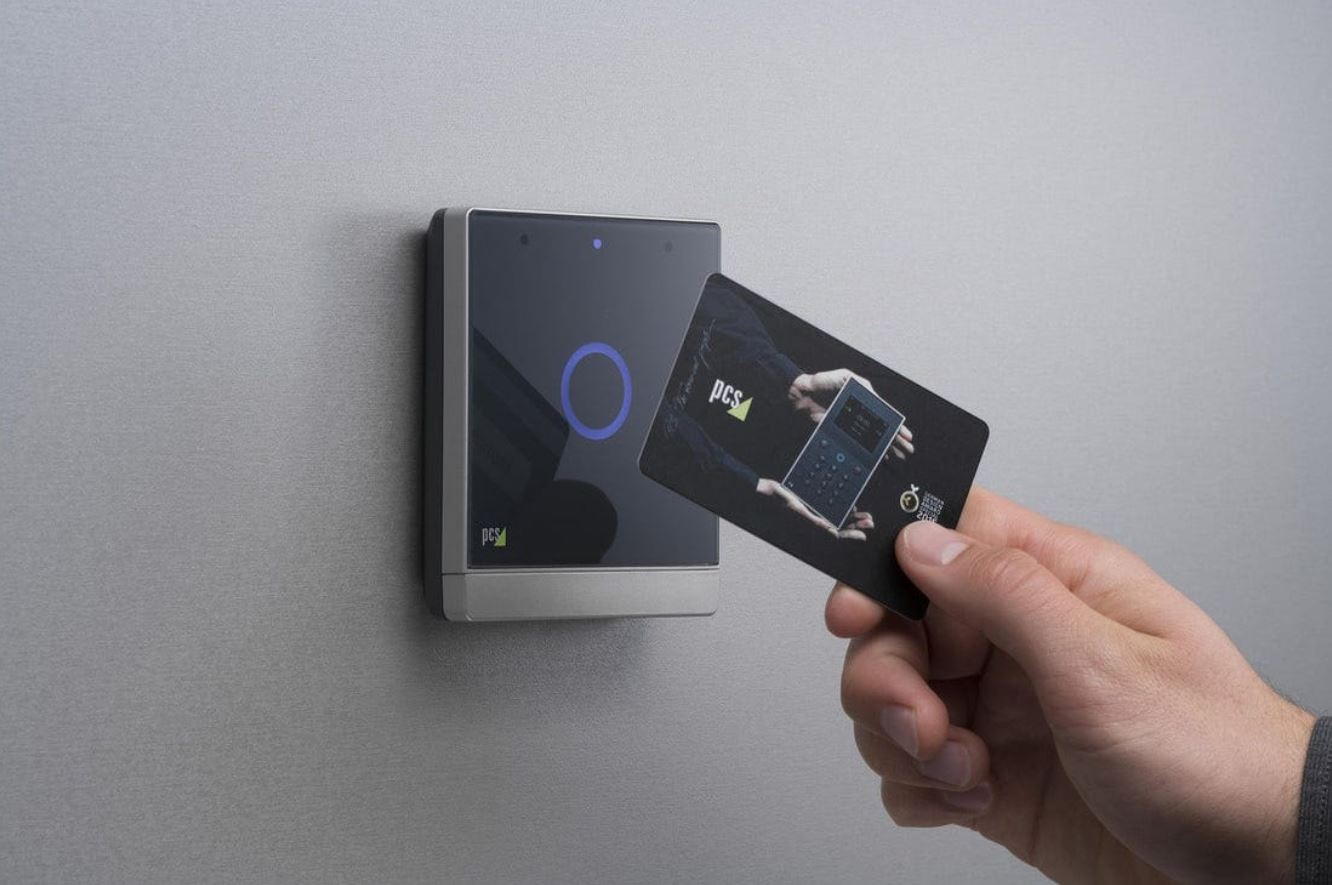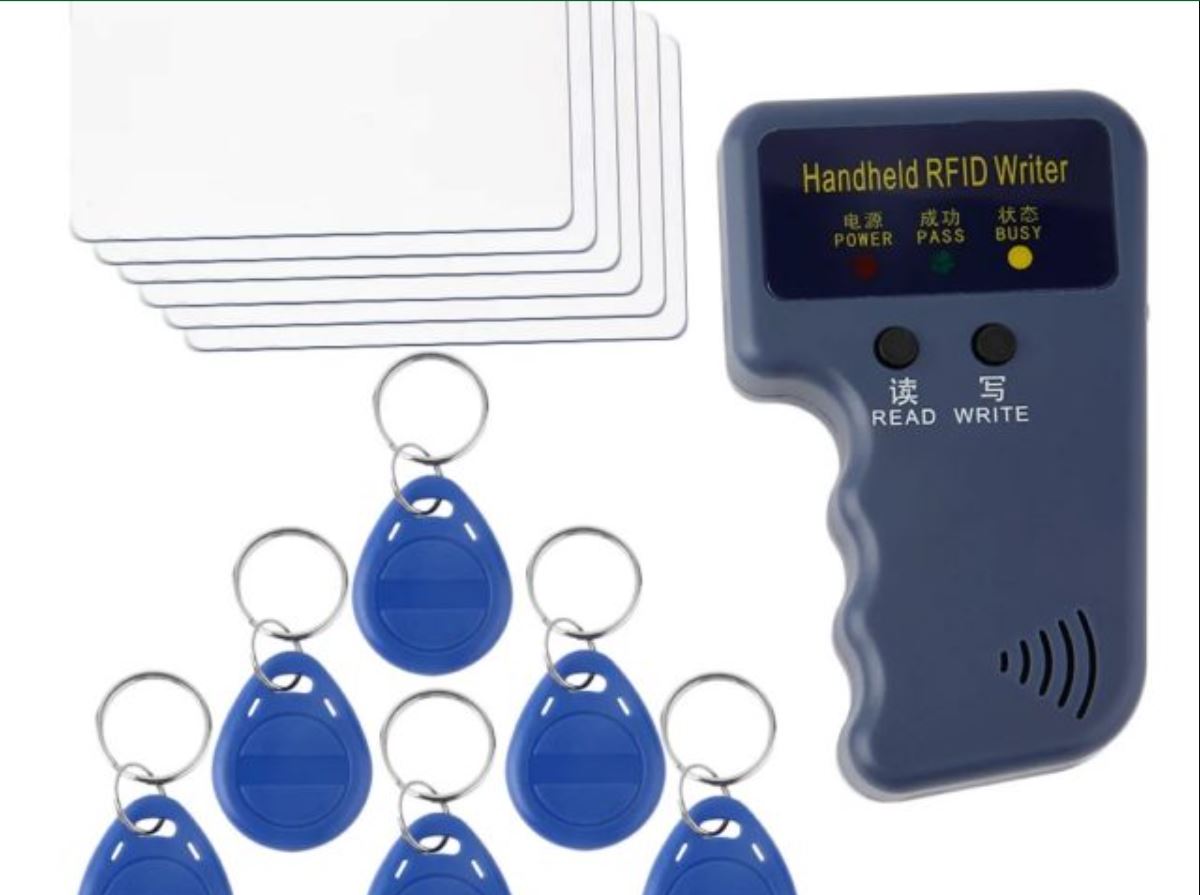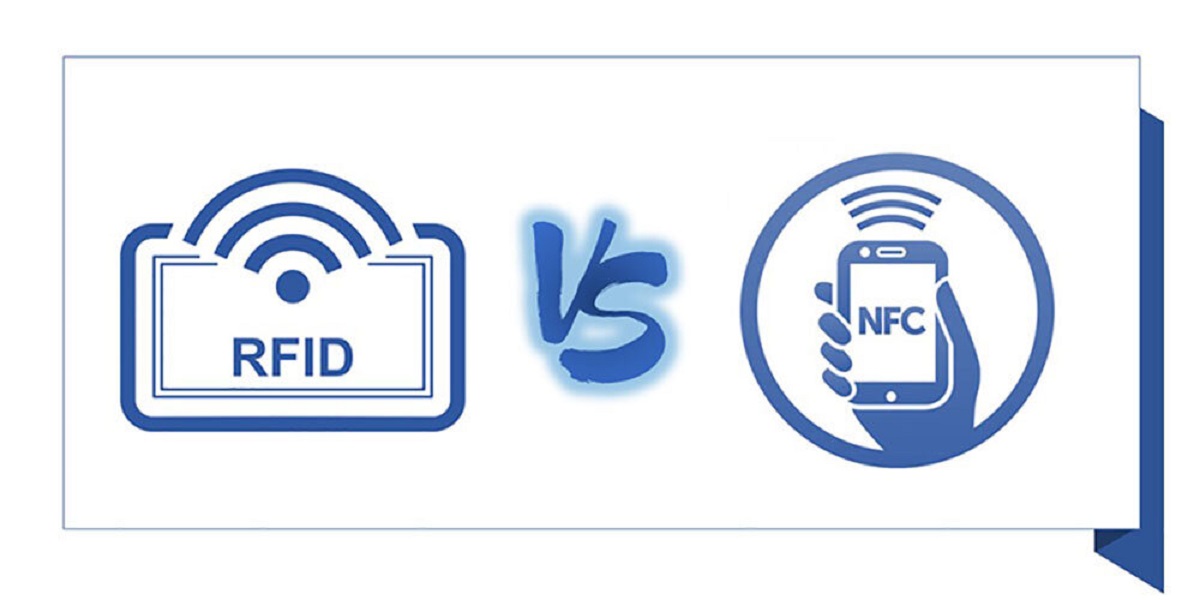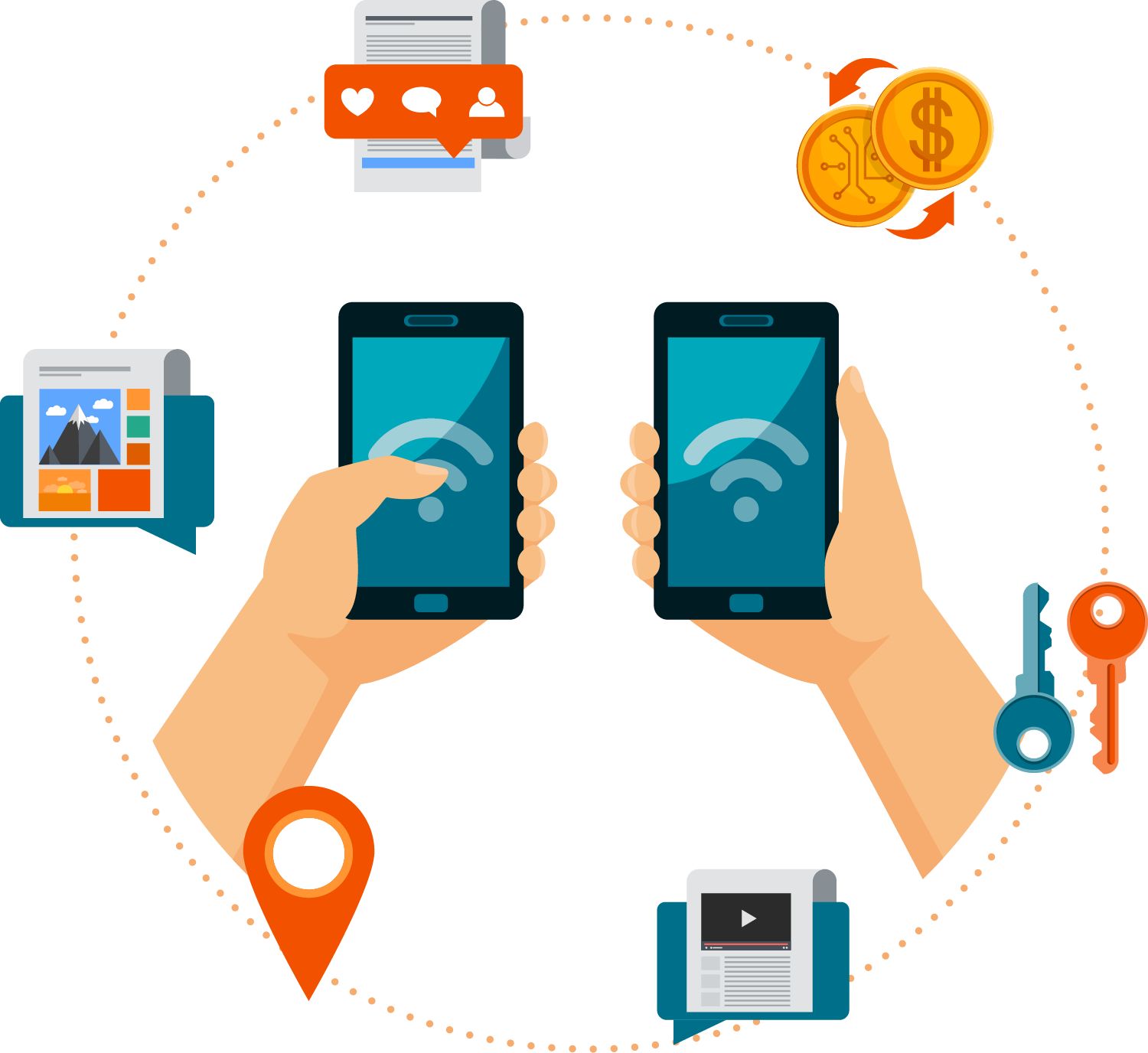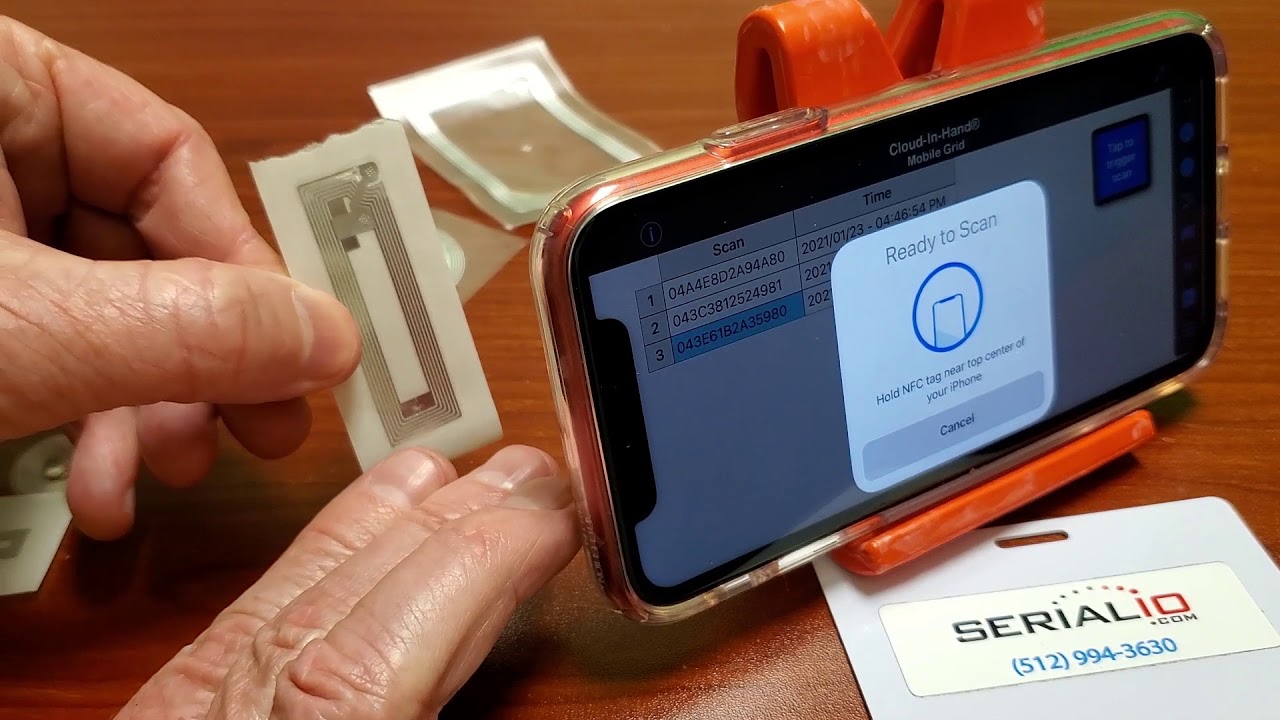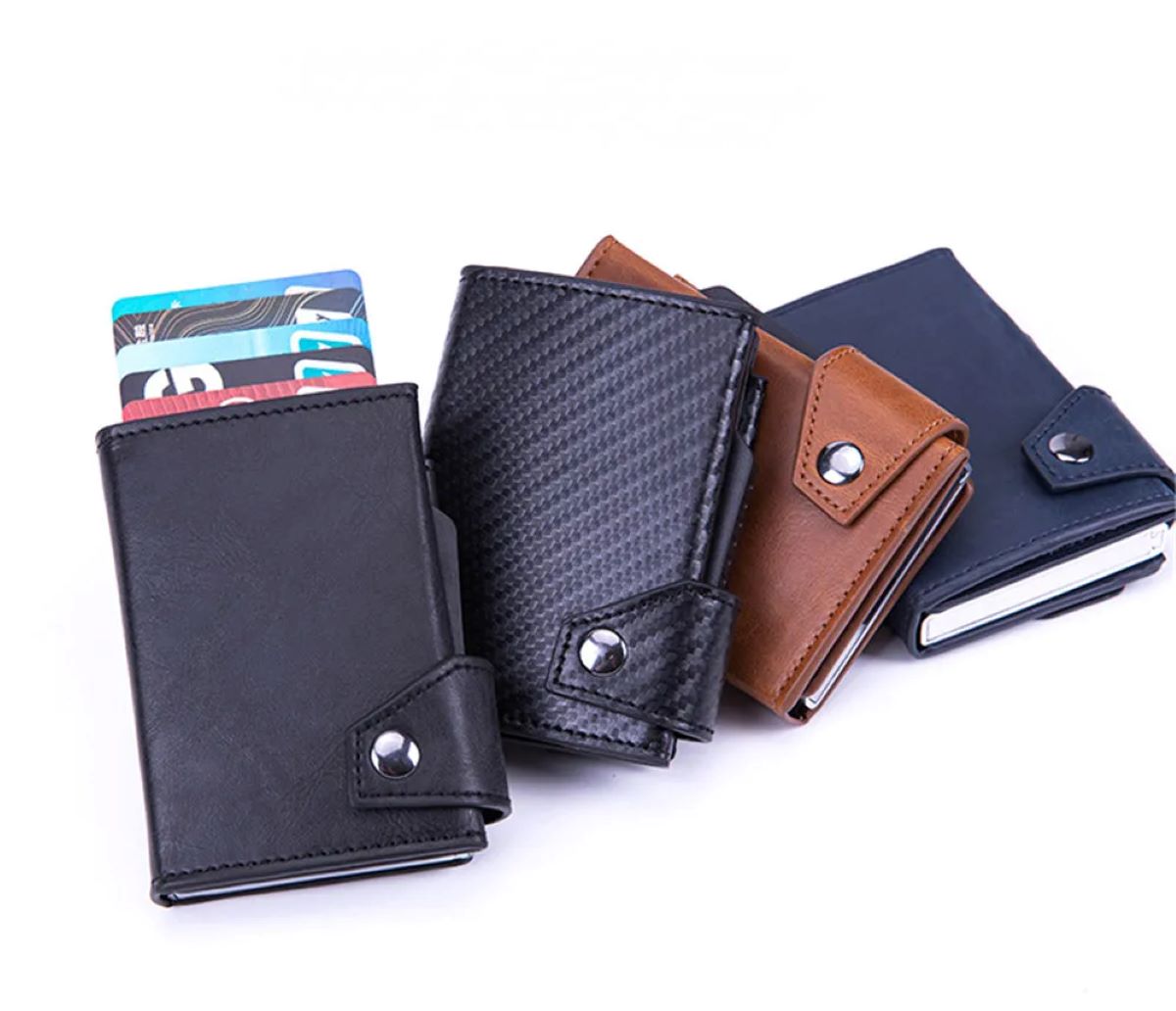Introduction
Welcome to the world of RFID and NFC – two technology terms that you may have come across while using contactless cards or mobile payments. RFID (Radio Frequency Identification) and NFC (Near Field Communication) are both forms of wireless communication that have revolutionized the way we interact with everyday objects.
RFID and NFC technologies are widely used in various applications such as contactless payment cards, access control systems, inventory management, and transportation ticketing. Despite their similarities, there are significant differences between the two technologies.
In this article, we will provide a comprehensive guide to help you understand the difference between RFID and NFC and how to determine if a card is RFID or NFC enabled. By the end of this article, you will be able to identify which technology is being used in your cards and devices.
Understanding the fundamentals of RFID and NFC is important in order to make informed decisions and ensure compatibility with devices and applications. So, let’s dive into the details of these two technologies and unravel the mysteries behind RFID and NFC.
What is RFID?
RFID, or Radio Frequency Identification, is a technology that uses radio waves to identify and track objects. It consists of two main components: an RFID tag and an RFID reader.
An RFID tag is a small electronic device that contains a unique identifier and is attached to an object. This identifier can be read by an RFID reader, which sends out radio waves and receives the signal back from the tag. The reader then converts this signal into meaningful information, such as product details, inventory status, or identification data.
RFID technology has transformed various industries, such as logistics, retail, and healthcare, by enabling efficient inventory management, asset tracking, and improved supply chain visibility. The key advantage of RFID is that it does not require line-of-sight communication, meaning the tag can be read even if it is not visible or covered by another object.
RFID tags can be classified into two types: passive and active. Passive RFID tags do not have built-in power sources and rely on the energy provided by the RFID reader. When the reader emits radio waves, the tag’s antenna picks up the energy and uses it to transmit its identifier back to the reader. Active RFID tags, on the other hand, have their own power source and can actively transmit signals to the reader, allowing for longer communication ranges.
RFID technology has greatly improved the efficiency and accuracy of many processes. For example, in retail, RFID tags can be used to quickly and accurately count inventory without the need for manual scanning, resulting in faster restocking and inventory replenishment. In transportation, RFID technology is used for toll collection and vehicle identification, making travel more convenient and automated.
In summary, RFID is a wireless technology that uses radio waves to identify and track objects. It has various applications and is widely used across industries due to its ability to improve efficiency and streamline processes.
What is NFC?
NFC, or Near Field Communication, is a short-range wireless technology that enables communication and data exchange between electronic devices, usually within a distance of a few centimeters. NFC is a subset of RFID technology and operates on the same principles of radio waves and identification.
NFC technology is built on the concept of contactless communication, where two devices can exchange data without the need for physical contact. This technology is commonly used in applications such as mobile payments, access control, and data transfer between devices.
One of the key features of NFC is its ability to enable secure transactions. With NFC-enabled smartphones, users can make payments by simply tapping their devices on a compatible payment terminal. This eliminates the need to carry physical credit or debit cards and provides a faster and more convenient payment experience.
In addition to mobile payments, NFC technology is also used for other applications such as access cards for secure buildings or events. By tapping an NFC-enabled card or smartphone on a reader, users can gain access to restricted areas or facilities. NFC tags can also be used to trigger actions on smartphones, such as launching an app or connecting to a Wi-Fi network, by simply tapping the device on the tag.
NFC operates in two modes: active and passive. In passive mode, the NFC device, such as a smartphone, behaves like an RFID tag and relies on an active NFC reader to initiate communication. In active mode, both devices can send and receive data, allowing for more complex interactions between devices.
NFC technology has gained popularity due to its wide range of applications and the increasing adoption of smartphones equipped with NFC capabilities. It provides a seamless and convenient way to interact with objects, make payments, and transfer data without the need for physical connections.
In summary, NFC is a short-range wireless technology that enables secure communication and data exchange between electronic devices. It is widely used for mobile payments, access control, and other applications that require contactless interaction.
Similarities between RFID and NFC
RFID and NFC technologies share several similarities due to their common foundation in wireless communication and identification. Here are some key similarities between RFID and NFC:
1. Wireless Communication: Both RFID and NFC utilize wireless communication to transmit data between devices. They rely on radio frequency signals to establish a communication link and exchange information.
2. Contactless Operation: Both RFID and NFC operate in a contactless manner, allowing devices to communicate without physical contact. This feature enables convenient and efficient interactions in various applications.
3. Range of Operation: Both technologies have a limited range of operation. Typically, this range is within a few centimeters or inches, ensuring that close proximity is required for successful communication. This limitation enhances security by reducing the risk of unauthorized access or eavesdropping.
4. Identification Capabilities: Both RFID and NFC are well-suited for identification purposes. They can be used to read and identify objects or individuals by accessing unique identifiers stored in RFID tags or NFC devices.
5. Interoperability: RFID and NFC devices are often designed to be interoperable, meaning they can communicate and exchange data with each other. This interoperability opens up possibilities for seamless integration and compatibility between RFID and NFC systems.
6. Integration with Mobile Devices: Both RFID and NFC technologies have been integrated into various mobile devices, such as smartphones and tablets. This integration has enabled numerous applications, including mobile payments, ticketing, and access control, to be carried out conveniently using a single device.
7. Security Features: Both technologies offer security features to protect transmitted data. They can support encryption and authentication protocols to ensure secure communication and prevent unauthorized access or data tampering.
In summary, RFID and NFC technologies share several similarities in terms of wireless communication, contactless operation, identification capabilities, interoperability, integration with mobile devices, and security features. Understanding these similarities can help clarify the overlapping aspects of the two technologies and provide a foundation for further exploration of their differences.
Differences between RFID and NFC
While RFID and NFC technologies are closely related, there are several notable differences that set them apart. Here are the key differences between RFID and NFC:
1. Communication Range: One of the main differences between RFID and NFC is the communication range. RFID technology typically has a longer communication range, ranging from a few centimeters up to several meters, depending on the type of RFID tag and reader used. In contrast, NFC operates at a much shorter range of up to a few centimeters, making it more suitable for close-range applications.
2. Power Requirements: RFID tags can be either passive or active. Passive RFID tags do not have their own power source and rely on the energy emitted by the RFID reader to power the tag and transmit data. Active RFID tags, on the other hand, have their own power source and are able to actively transmit data to the reader. NFC devices, such as smartphones or cards, are typically powered by a battery and can actively engage in two-way communication.
3. Data Transfer Speed: NFC generally offers faster data transfer speeds compared to RFID. NFC devices support data transfer rates of up to 424 kbps (kilobits per second), which is sufficient for most applications like mobile payments or data exchange between devices. RFID, on the other hand, often operates at slower transfer speeds due to the nature of its applications, such as inventory tracking or asset management.
4. Operating Frequency: RFID operates across a wide range of frequencies, including low frequency (LF), high frequency (HF), and ultra-high frequency (UHF), depending on the specific application. NFC, on the other hand, operates at 13.56 MHz, which is within the high-frequency range. This standardized frequency allows for greater interoperability between NFC devices.
5. Applications: While both RFID and NFC have numerous applications, there are some differences in their usage. RFID is commonly used in applications like asset tracking, inventory management, and access control systems. NFC, on the other hand, is often used for mobile payments, electronic ticketing, keycard access, and data transfer between smartphones or other NFC-enabled devices.
6. Security Levels: Both RFID and NFC technologies offer security features, but NFC provides a higher level of security compared to most RFID systems. NFC incorporates encryption and authentication protocols to ensure secure communication between devices, making it more suitable for applications that require secure transactions or data exchange.
Understanding the differences between RFID and NFC is crucial in determining which technology is best suited for a particular application. While RFID offers longer range and wider frequency options, NFC provides faster data transfer speeds, higher security levels, and better integration with mobile devices.
How to tell if a card is RFID or NFC
Determining whether a card is RFID (Radio Frequency Identification) or NFC (Near Field Communication) enabled can be quite straightforward with some simple methods. Here are three methods to help you identify if a card contains RFID or NFC technology:
Method 1: Using a smartphone: The easiest way to identify if a card is RFID or NFC enabled is by using a smartphone with NFC capabilities. Most modern smartphones, especially Android devices and some iPhones, come equipped with NFC technology. To check if a card has RFID or NFC, follow these steps:
- Unlock your smartphone and enable NFC in the settings menu.
- Hold the card close to the back of your phone, where the NFC antenna is usually located.
- If the card is NFC enabled, your phone will detect it and may prompt you with options or display relevant information.
- If the card is RFID enabled, your smartphone will not detect anything, as RFID requires specialized readers.
Method 2: Looking for signs on the card: Some cards may have visible indications indicating the presence of RFID or NFC technology. Look for any logos or symbols on the card that suggest contactless communication. Common symbols include the “waves” symbol for NFC or the stacked “WiFi-like” symbol for RFID. These symbols are often found on access cards, credit cards, or identification badges. If you spot any of these symbols, there is a high chance that the card contains RFID or NFC technology.
Method 3: Contact the card issuer or manufacturer: If you are unable to determine if a card is RFID or NFC enabled using the above methods, you can contact the card issuer or manufacturer for clarification. They should be able to provide accurate information about the technology embedded in the card. Check the card provider’s website or contact their customer service department for assistance.
By using a smartphone, looking for symbols on the card, or contacting the card issuer or manufacturer, you can easily determine if a card is RFID or NFC enabled. Identifying the technology used in your cards is useful for understanding the compatibility and functionality of the card, enabling you to take advantage of the convenience and benefits offered by RFID or NFC technology.
Method 1: Using a smartphone
One of the simplest and most convenient methods to determine if a card is RFID or NFC enabled is by using a smartphone with NFC capabilities. With the widespread adoption of NFC technology in modern smartphones, this method allows you to quickly check if a card contains RFID or NFC technology. Here is a step-by-step guide:
- Unlock your smartphone and navigate to the settings menu.
- Look for the NFC option and ensure it is turned on. In some smartphones, you may need to enable “NFC and payment” or similar options.
- Take the card you want to check and hold it close to the back of your smartphone. Most smartphones have the NFC antenna near the top or center back of the device.
- If the card is NFC enabled, your smartphone will detect it and may display a prompt or provide relevant information regarding the card.
- On some smartphones, you may need to install an NFC scanning app from the app store to read and interpret the information from the card.
- If your smartphone doesn’t detect anything or no prompt appears, it is likely that the card does not contain NFC technology. However, remember that certain older or proprietary NFC cards may not be compatible with all smartphone models.
Using a smartphone to check for RFID or NFC technology is a quick and accessible method. It allows you to confirm the presence of NFC in a matter of seconds and provides a convenient way to access information related to the card if it is NFC enabled.
It’s important to note that this method requires a smartphone with NFC capabilities. While most Android devices and some iPhones have NFC functionality, it’s always a good idea to check your phone’s specifications or consult the manufacturer’s website to ensure your device supports NFC.
By using your smartphone as an NFC reader, you can easily identify if a card is NFC enabled. This method is practical, especially when you are unsure about the technology embedded in a card and want to verify its compatibility with NFC-enabled devices and applications.
Method 2: Looking for signs on the card
Another method to determine if a card is RFID or NFC enabled is to look for visible signs or symbols on the card itself. Many cards that incorporate contactless technology, such as RFID or NFC, often have indicators that can help identify their capabilities. Here’s how you can use this method:
- Take the card you want to check and closely examine it for any logos, symbols, or text related to contactless communication.
- Look for the universally recognizable “waves” symbol, which typically denotes the presence of NFC technology. It resembles a set of curved lines similar to radio waves. This symbol is commonly found on NFC-enabled devices and often indicates compatibility with contactless payment or data transfer.
- Alternatively, some cards may have a stacked “WiFi-like” symbol, which represents RFID technology. This symbol consists of curved lines, similar to the signal strength icon for wireless networks, arranged in a vertical stack. It is often seen on RFID-enabled access cards, identification badges, or inventory tags.
- These symbols or logos are usually placed on the front or back of the card, near the bottom corner, or in a designated area. They can vary in color and style, but the shape and general placement are consistent.
- If you find any of these symbols on the card, it is highly likely that the card contains RFID or NFC technology.
- Keep in mind that some cards may not explicitly display such symbols or logos. In those cases, the absence of any indicators does not necessarily mean the card lacks RFID or NFC capabilities.
By scrutinizing the card for recognizable symbols or signs, you can often determine whether it is RFID or NFC enabled. These indicators provide a visual clue that the card can be used for contactless transactions, access control, or other wireless interactions.
It is important to note that not all cards may have visible signs or symbols indicating the presence of RFID or NFC technology. Some cards, especially those with more discreet design elements, may not display such indicators, making it challenging to determine the technology just by visual inspection.
Using this method in combination with other identification methods can help verify if a card contains RFID or NFC technology and provide additional assurance of its contactless capabilities.
Method 3: Contact the card issuer or manufacturer
If you are unable to determine whether a card is RFID or NFC enabled using other methods, reaching out to the card’s issuer or manufacturer is a reliable way to obtain accurate information. The issuer or manufacturer should have the necessary knowledge and documentation to clarify the technology embedded in the card. Here’s how you can use this method:
- Identify the card issuer or manufacturer. This information can usually be found on the card itself, such as the company logo or name.
- Visit the issuer’s or manufacturer’s official website. Look for a “Contact Us” or “Support” page that provides contact information.
- Reach out to the issuer or manufacturer via phone, email, or any other available communication method provided on their website.
- Clearly explain that you have a card and wish to confirm if it contains RFID or NFC technology.
- Provide the issuer or manufacturer with any relevant card details or identification numbers if requested.
- Ask for confirmation regarding the presence of RFID or NFC technology in the card and any additional information they can provide.
- Take note of the information provided by the issuer or manufacturer for future reference.
By directly contacting the card issuer or manufacturer, you can obtain accurate information regarding the technology embedded in the card. Their knowledge and expertise in the production and functionality of the card can help you determine if it is RFID or NFC enabled.
For some cards, especially those issued by banks or financial institutions, customer service representatives may not have access to detailed technical specifications. In such cases, they might refer you to a specialized department or provide general information about the card’s capabilities.
If the card issuer or manufacturer does not have the necessary information, they may direct you to relevant resources or suggest alternative methods to identify the technology, ensuring you have the most accurate and up-to-date information available.
Using this method allows you to directly engage with experts who can provide accurate information about the RFID or NFC capabilities of the card in question, offering peace of mind and clarity on its technological features.
Conclusion
RFID and NFC technologies have transformed the way we interact with objects and conduct various transactions. While they share similarities, such as wireless communication and identification capabilities, there are also notable differences between RFID and NFC.
In this article, we explored different methods to determine if a card is RFID or NFC enabled. By using a smartphone with NFC capabilities, you can quickly check if a card is NFC enabled and access relevant information. Additionally, looking for signs on the card, such as symbols or logos, can provide visual cues indicating the presence of RFID or NFC technology. Lastly, contacting the card issuer or manufacturer is a reliable method to obtain accurate information about the technology embedded in the card.
Identifying whether a card is RFID or NFC enabled is crucial for understanding its compatibility with various systems, applications, and devices. It allows you to leverage the benefits of contactless technology, such as seamless payments, access control, and efficient data transfer. Armed with this knowledge, you can make informed decisions and ensure that your card aligns with your specific needs and preferences.
As technology continues to advance, RFID and NFC technologies will play an increasingly important role in our daily lives. Whether it’s for making quick payments, accessing secure areas, or improving inventory management, understanding the nuances of these technologies empowers us to navigate the ever-evolving landscape of contactless communication.
Remember to stay informed about the latest advancements in RFID and NFC technologies, as they continue to shape the way we interact with the world around us.







